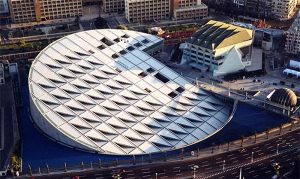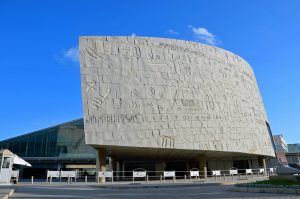As learning goes on the move, librarians not only must keep up with significant changes in education environments but aim to become connectors and collaborators within our users’ learning spaces.
-Michael Stephens, The Heart of Librarianship
Libraries are spaces that create and facilitate connections between individuals, organizations, and businesses. They offer support, discovery, and engagement options for various experiences and objectives. As such, they are an ideal environment for providing all learning opportunities, including exploring, playing, creating, and peer-to-peer collaboration. These critical aspects of the creative classroom research model lend themselves well to the infinite learning service model for library environments. An Infinite Learning Service model encourages library programs and services that are fresh, evolutionary, innovative, flexible, and high quality (Stephens, 2024).
Infinite learning in libraries goes beyond hosting familiar services and programs like maker spaces, cooking classes, or tech tutorials. Libraries must also consider the tools, resources, and partnerships they offer their patrons to encourage infinite learning experiences within their institutions. Helping others curate a learning experience, expand their space, try new things, and create personalized learning opportunities is an important aspect of the library’s role in infinite learning practices. Sometimes, patrons will want help with brainstorming and planning, settings or configuration, pedagogy, or selecting technology and tools, and libraries must be prepared and thoughtful in accommodating those needs (Mathews, 2013).
The mandate to create and facilitate connections is elaborated on in the context of the connected learning movement, which is about libraries offering “interest-driven, peer-supported, and academically oriented learning for youth by promoting the core values of equity, participation, and social connection” (Nygren, 2014, p. 1). The movement comprises coupling formal and informal learning organizations to make learning more passionate, engaging, and relevant to provide personal achievements, stakes, and qualities. The emphasis on connections can mean connections between peers and mentors, the learner’s innate and developed interests, or academic subjects, institutions, and credentials. Learning is accelerated and more powerful when people share a purpose and production and have ways to get organized, motivated, and supported (Nygren, 2014).
Libraries interested in supporting infinite learning by thinking of their space as a classroom can use the connected learning approach to guide decision-making and best practices in their space, programs, and services. A key aspect of the model is to build a network of connections across boundaries with professionals and peers of similar interests. Libraries should include members of their physical and virtual communities and encourage “maker culture” with events designed to support creativity and exploration. Controversially, libraries should consider not blocking software, online services, and social media, not using internet filters, not allowing more than one operating system, and only providing proprietary software in the library; these hinder the effective creation of personal learning environments. Lastly, a balanced mix of partnerships between academia, the public, and industry sectors should be found to meet the needs of the library community (Nygren, 2014).
As this YouTube creator explains, our unique relationship to information gives it value in an era of information abundance. Sharing and collaboration may be the strongest learning tools that we have.
References
[Aidan Helfant]. (2023, May 23). Your Infinite Library [Video]. Youtube. https://www.youtube.com/watch?v=u1F4zryuz0M
Mathews, B. (2013, September 5). Curating Learning Experiences: A Future Role For Librarians? The Chronicle of Higher Education: The Ubiquitous Librarian. https://www.chronicle.com/blognetwork/theubiquitouslibrarian/2013/09/05/curating-learning-experiences-a-future-role-for-librarians/
Nygren, Å. (2014). The Public Library as a Community Hub for Connected Learning. IFLA LYON. chrome-extension://efaidnbmnnnibpcajpcglclefindmkaj/https://library.ifla.org/id/eprint/1014/1/167-nygren-en.pdf
Stephens, M. (2024, January 24). Hyperlinked Library Library as Classroom [Lecture]. San Jose State University. https://sjsu-ischool.hosted.panopto.com/Panopto/Pages/Viewer.aspx?id=c716d09f-f8cf-4a08-bef8-af34011f855e
Stephens, M. (2019). Wholehearted Librarianship: Finding Hope, Inspiration, and Balance (p.91). ALA Editions.

